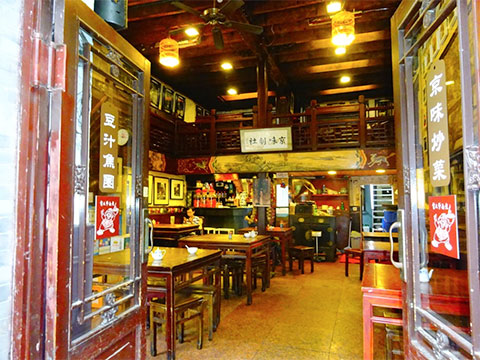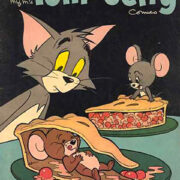‘Do they really eat dog?’ was the most common question I encountered after I returned from a two-week-long trip to Xian and Beijing.
It’s almost bizarre how the idea of a cuisine that is such a big part of the restaurant culture in India is fraught with so much dubiety. Much like Indian cuisine, food in China has two distinct separate origins: the cuisine of kings and concubines with appropriate names like Peking Duck, Phoenix in the Nest, Precious fish, and the home food that peasants lived on, much the same stuff our peasants lived on — onions, garlic, and ginger. With the advent of communism and a century of starving, everyone now eats everything; food is everywhere and it’s a major pastime.

Be ready to sample everything. Photograph by Reshma Krishnan Barshikar.
Food carts are ubiquitous, serving everything from scorpions on a stick to candied apples — this one time I bit into a pink lacquered lollipop and got pork instead. I prefer pork to apple, but I pictured my poor mother (a vegetarian) biting into a lollipop and becoming scarred for life; screaming ‘Hare Rama’, and vowing never to touch candy again. Not knowing what you’re eating is a tightrope on which only the most fearless (or the most patient) can walk. Indians like to know what they’re eating and the language barrier means that it’s not always possible in China — it takes time to get onto the Internet, or scan the guidebook, search for ‘pork’ (zhurou), and get a response from a bemused vendor. But for the patient, curious, and intrepid traveller, there is almost no better place for a food adventure. Just be ready to sample everything.
After a disappointing morning — we hadn’t realised that every major attraction in Beijing was closed on a Monday — we roamed Tiananamen Square, gazed at the billboard-sized portrait of Mao, and since we weren’t sure of what to do next, decided to find something to eat. We made our way to Qianmen Dajie, an erstwhile red-light district now revamped as a high-end shopping promenade, where Chinese brands old and new come together, raise their prices, and sell packaged antiquity. A chopstick could set you back RMB 50 (1 RMB equals ₹10).
Our first stop was Du Yi Chu, a 300-year-old restaurant so renowned for it’s shaomai (a Beijing-style dim sum) that it is said to have been Emperor Qianlong’s favorite. After we walked in, I signalled ‘two’ with my fingers and we were immediately shown to a table and handed a Chinese menu; there was no non-Chinese menu in sight. Our server quickly realised her mistake and slapped on the table, I kid you not, a faded post-it note with English translations of the items on the menu. We deciphered pork, beef, pork and beef, and shrimp. We ordered all four, a pitcher of beer, and some tea. In about 10 minutes, we received four steamers heaving with what looked like white marigolds, pretty as a picture. The edges of the shaomai are ruffled before they are generously filled with a mixture of meat and spices that literally bursts onto your tongue. The wrappers are as thin as dragonfly wings and we had about thirty between us. (Each steamer was RMB 40.)

The edges of the shaomai are ruffled before they are generously filled with a mixture of meat and spices that literally bursts onto your tongue. Photograph by Reshma Krishnan Barshikar.
Later, we decided to explore Dazhalan, a hutong (alleyway) off Qianmen Dajie famous for its old shops. The effort left us hungry and craving some carbohydrates, and soon we began to look for noodles. Beijingers are, traditionally, noodle people, and consequently, my Xianese Guide told me, ‘long and wiry’ unlike the rice people from the south who tended to be ‘short and stout’ (stereotyping is apparently another thing we have in common with the Chinese). We dropped in at Tongrentang Pharmacy, which still sells medicines based on recipes of the old Qing courts, and asked for miantiao (noodles) at the information centre. A woman, who was far more interested in reading the latest Chinese Hello, kept her head down, raised her arm and pointed ahead. We didn’t find any noodles ahead but we did stumble upon Tianhai Canting, a Chinese bistro with a bar table full of jars of snakes — there might also have been a scorpion or two. While my husband stepped outside to attend to to a conference call, I had steaming sausage stew and some more beer while perusing some black-and-white photographs of old Beijing, from a time when bicycles thronged the square, red stars adorned caps, and everyone was in uniform. There was no one who could tell me what the snakes were for, so I concluded that they were marinating for some sort of dish. When my husband was done with his call, he decided to forego the stew and have skewers of spicy roasted lamb on the road instead (RMB 5). Still no hint of dog.

Still no hint of dog. Photograph by Reshma Krishnan Barshikar.
For those of you unwilling to take a chance on a Chinese menu that might include snakes, Huajia Yiyuan at 235 Dongzhimen Nei Dajie might be more up your hutong. After much searching, we heaved a sigh of relief when we saw the gilded 235 and an ornate lacquered red door. (Everything in china is lacquered to within an inch of its life, and I don’t blame them; it looks beautiful.) We were led through a small corridor and into a leafy courtyard filled with tables and a small stage where the night’s entertainment was in session. This was an obvious tourist destination, but thankfully not a ‘trap’. Albeit the easy ‘picture’ menu, the food was ‘Imperial Cuisine’ in every way — nothing on the menu cost less than RMB 50. An English-speaking server called ‘James Bond’ recommended dishes to us in an extremely candid manner: ‘Very good’, ‘That is crap’, ‘Chinese like endangered things’, etc. We left him a tip of RMB 100 (he may have called me beautiful and my husband lucky, repeatedly).
We began with sweet pork in cold cucumber, moved on to a plate of Sichuan lobsters and excellent stir-fried chili beans with minced beef and wild turtle. (Yes, I am a horrible person, but when in Rome…) The wild turtle, I am sad to say, was heavenly. It had the delicate flavour of mutton with none of its inherent chewiness. The vaudeville was brilliant, in particular the magician. He changed the masks on his face with every turn of a pirouette, a sleight of face if you will. We were mesmerised and continued to drink wine long after we had finished our meal. The act became more intriguing with every sip and so did our bill. After dinner, James Bond, whom we’d gotten to know quite well by now, showed us the way to Tango, a night club housed in a shimmering cube, but that’s a story for another time.








